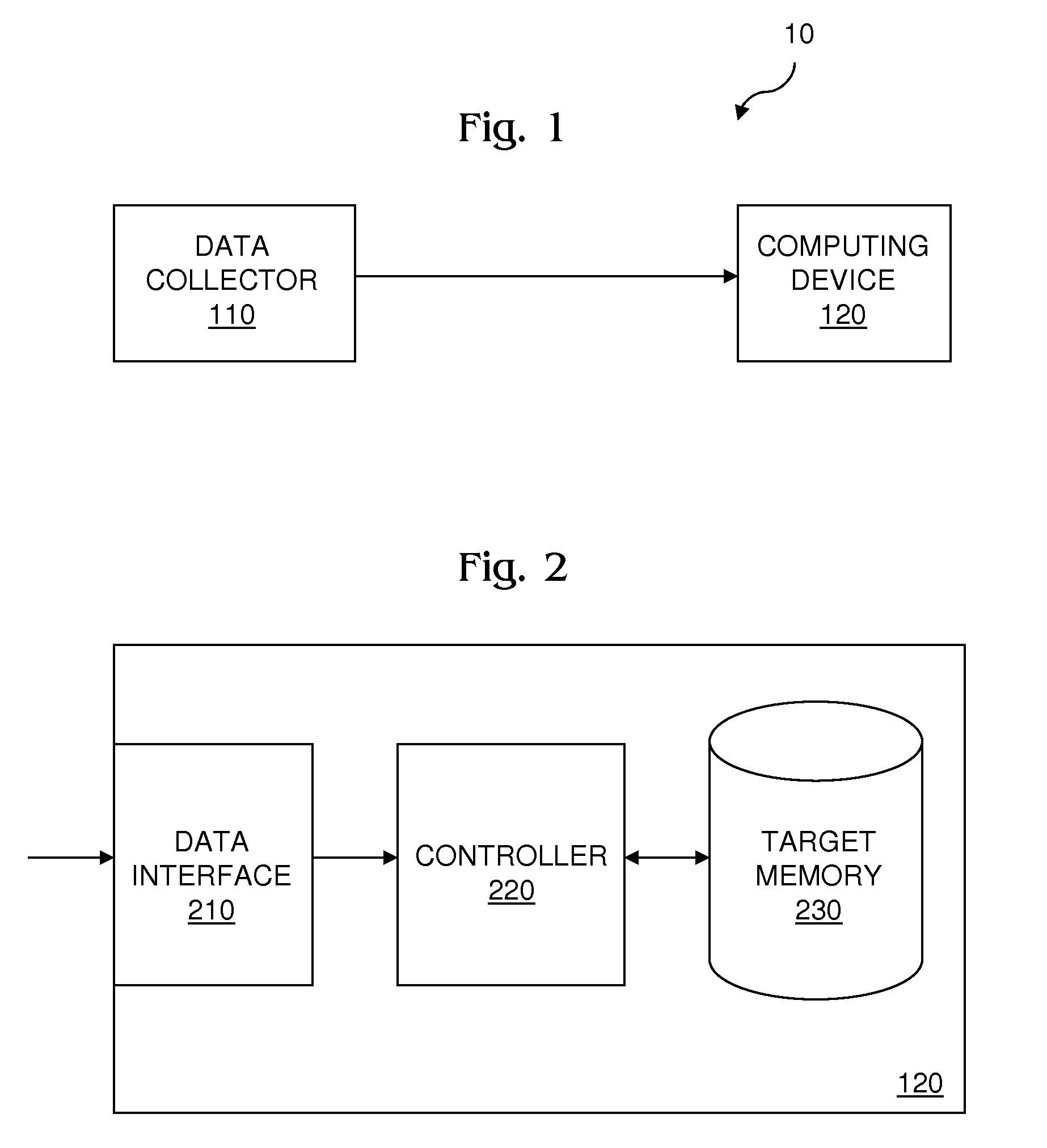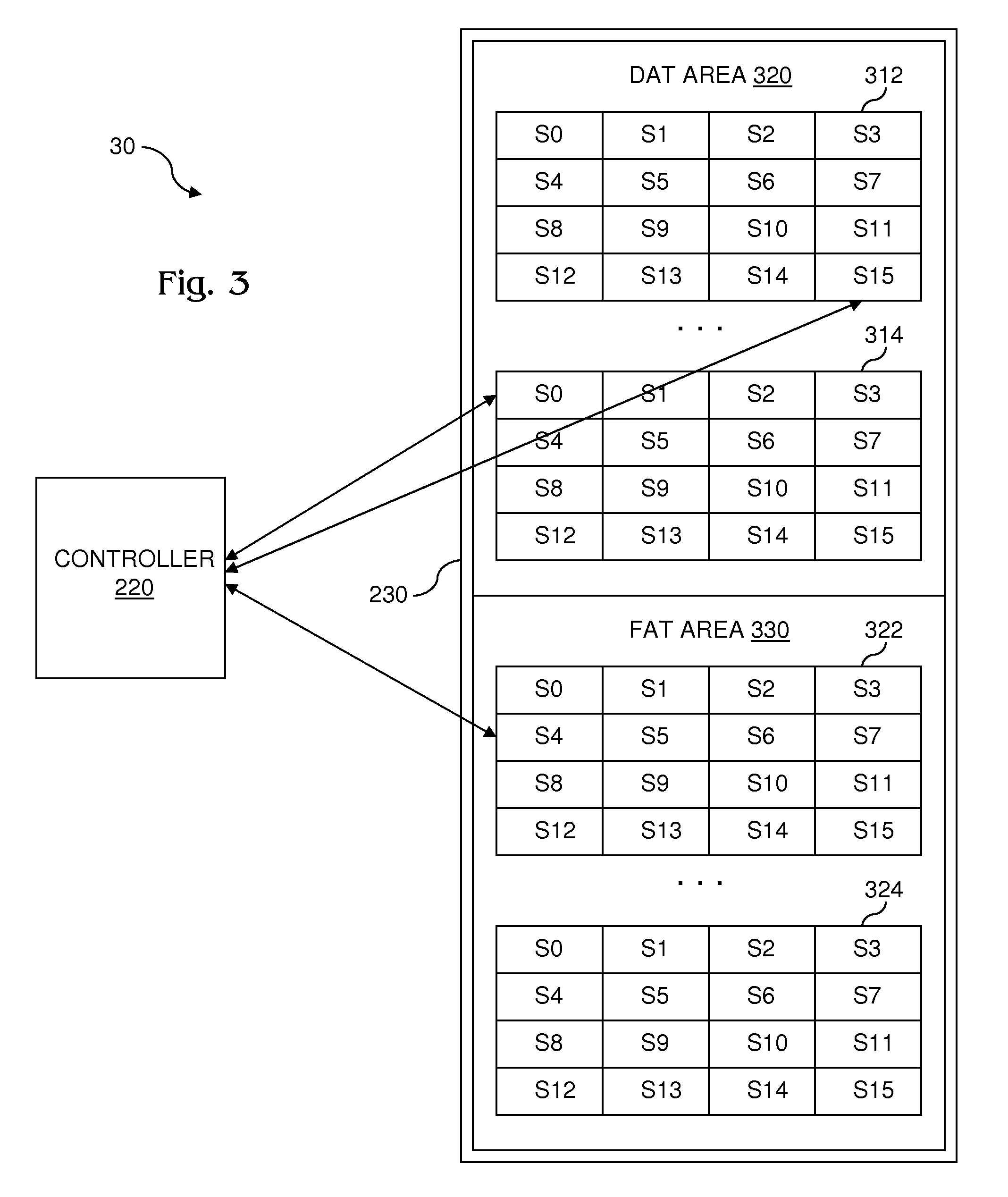Computing device having optimized file system and methods for use therein
a file system and computer technology, applied in computing, memory address/allocation/relocation, instruments, etc., can solve the problems of reducing the battery life slow operation of the computing device, and loss of existing data in the target memory
- Summary
- Abstract
- Description
- Claims
- Application Information
AI Technical Summary
Benefits of technology
Problems solved by technology
Method used
Image
Examples
Embodiment Construction
[0026]FIG. 1 shows a data collection system 10. System 10 includes a data collector 110 communicatively coupled with a computing device 120. Communicative coupling may be made over a wired or wireless data connection. In operation, data collector 110 continually collects data and transmits the data in a continuous data stream to computing device 120 whereon the streamed data are logged. Once logged on computing device 120, the streamed data are not accessed until offloaded to an external device, permitting various optimizations to be made to the file system on computing device 120 that expedite processing.
[0027]In some embodiments, collection system 10 is an ambulatory health monitoring system in which data collector 110 transmits data packets containing real-time body audio data (e.g., heart and lung sound), environment audio data, temperature data, accelerometer data and vital sign data (e.g., heart rate) to computing device 120 in a continuous data stream. In these embodiments, c...
PUM
 Login to View More
Login to View More Abstract
Description
Claims
Application Information
 Login to View More
Login to View More - R&D
- Intellectual Property
- Life Sciences
- Materials
- Tech Scout
- Unparalleled Data Quality
- Higher Quality Content
- 60% Fewer Hallucinations
Browse by: Latest US Patents, China's latest patents, Technical Efficacy Thesaurus, Application Domain, Technology Topic, Popular Technical Reports.
© 2025 PatSnap. All rights reserved.Legal|Privacy policy|Modern Slavery Act Transparency Statement|Sitemap|About US| Contact US: help@patsnap.com



